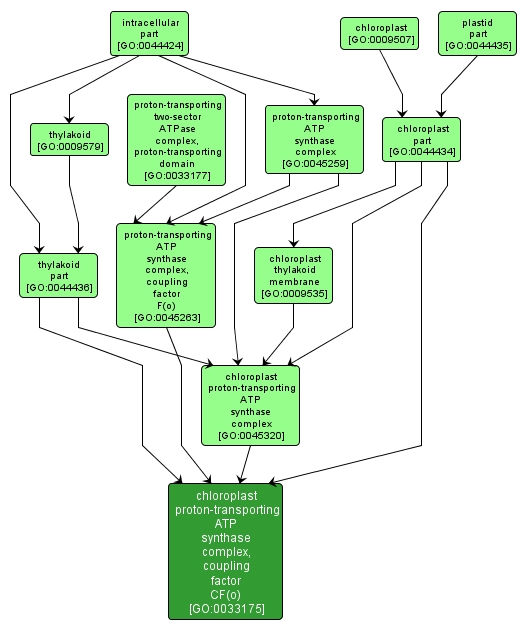GO TERM SUMMARY
|
| Name: |
chloroplast proton-transporting ATP synthase complex, coupling factor CF(o) |
| Acc: |
GO:0033175 |
| Aspect: |
Cellular Component |
| Desc: |
All non-F1 subunits of the chloroplast hydrogen-transporting ATP synthase, including integral and peripheral chloroplast thylakoid membrane proteins. |
Synonyms:
- chloroplast proton-transporting ATP synthase complex, coupling factor CF(0)
- chloroplast proton-transporting F-type ATPase complex, coupling factor CF(o)
|
|

|
INTERACTIVE GO GRAPH
|














